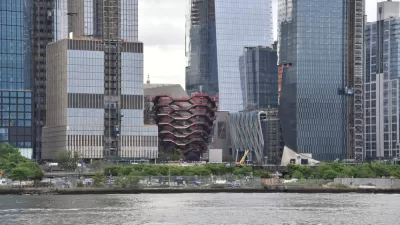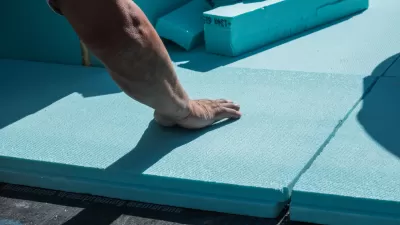Julie Iovine praises the Bloomberg administration's entrepreneurial spirit in remaking New York City, but fears what might come next.
Iovine is enthralled with the Bloomberg administrations ability to identify problems and opportunities to improve the built environment, and to implement solutions "with astonishing speed." She is captivated by, "This hallmark ability to pounce" which "has turned New York City from an
eminence grise into an urban wunderkind."
"We're not Copenhagen, yet, but
New York has bootstrapped it's way up from Scorsese seedy to sustainably
cosmopolitan. Other cities want to learn from us. From the High Line to
the rooftops of Via Verde, you can see mayoral posses taking notes."
The administration's rapid responsiveness hasn't come without its critics however. "The Pratt Center for Community Development has cautioned in the past
that the Bloomberg Administration has launched a lot of plans without
sufficient neighborhood input and that the city's own strategic plans
are not transparent enough for communities to understand and respond
with their own feedback."
With the end of the Bloomberg era in sight, "the anxiety about what lies ahead is palpable," notes Iovine. "The next team
will need performance enhancers to match this band of bureaucrats with
shared purpose who believe that new ideas must be put to work sooner
than later."
FULL STORY: Editorial> Carpe Diem & Then What

Planetizen Federal Action Tracker
A weekly monitor of how Trump’s orders and actions are impacting planners and planning in America.

Maui's Vacation Rental Debate Turns Ugly
Verbal attacks, misinformation campaigns and fistfights plague a high-stakes debate to convert thousands of vacation rentals into long-term housing.

Restaurant Patios Were a Pandemic Win — Why Were They so Hard to Keep?
Social distancing requirements and changes in travel patterns prompted cities to pilot new uses for street and sidewalk space. Then it got complicated.

In California Battle of Housing vs. Environment, Housing Just Won
A new state law significantly limits the power of CEQA, an environmental review law that served as a powerful tool for blocking new development.

Boulder Eliminates Parking Minimums Citywide
Officials estimate the cost of building a single underground parking space at up to $100,000.

Orange County, Florida Adopts Largest US “Sprawl Repair” Code
The ‘Orange Code’ seeks to rectify decades of sprawl-inducing, car-oriented development.
Urban Design for Planners 1: Software Tools
This six-course series explores essential urban design concepts using open source software and equips planners with the tools they need to participate fully in the urban design process.
Planning for Universal Design
Learn the tools for implementing Universal Design in planning regulations.
Heyer Gruel & Associates PA
JM Goldson LLC
Custer County Colorado
City of Camden Redevelopment Agency
City of Astoria
Transportation Research & Education Center (TREC) at Portland State University
Jefferson Parish Government
Camden Redevelopment Agency
City of Claremont





























